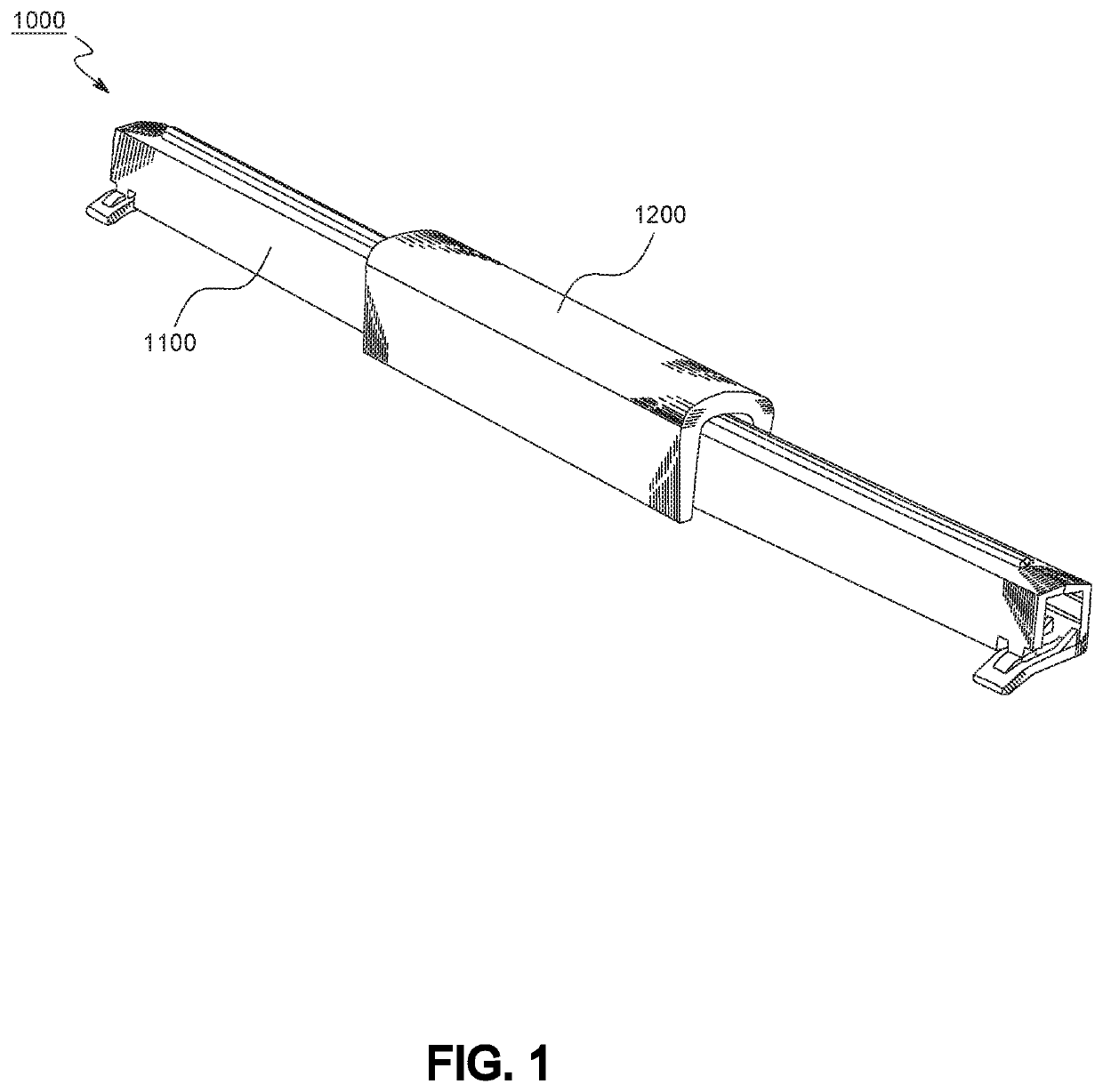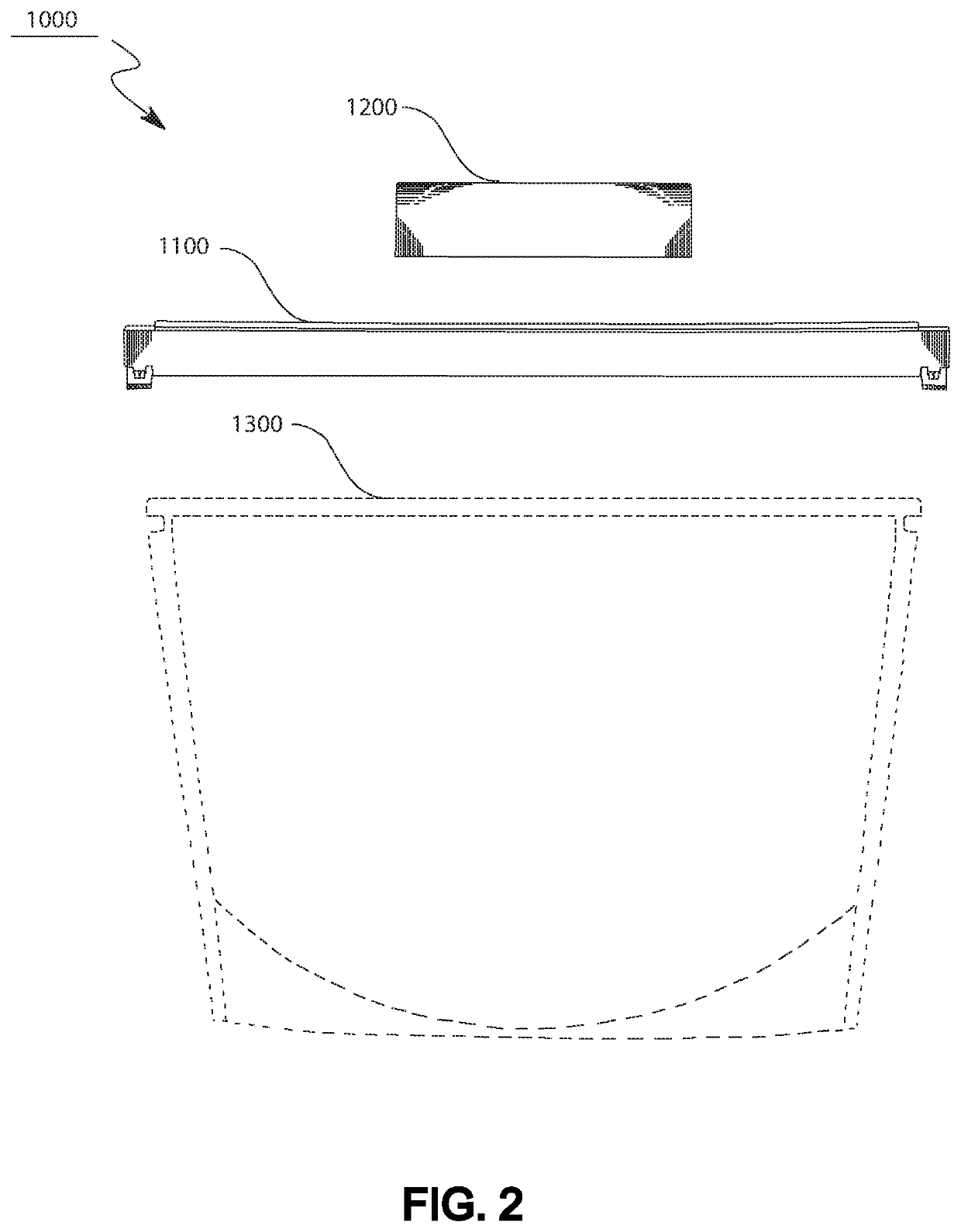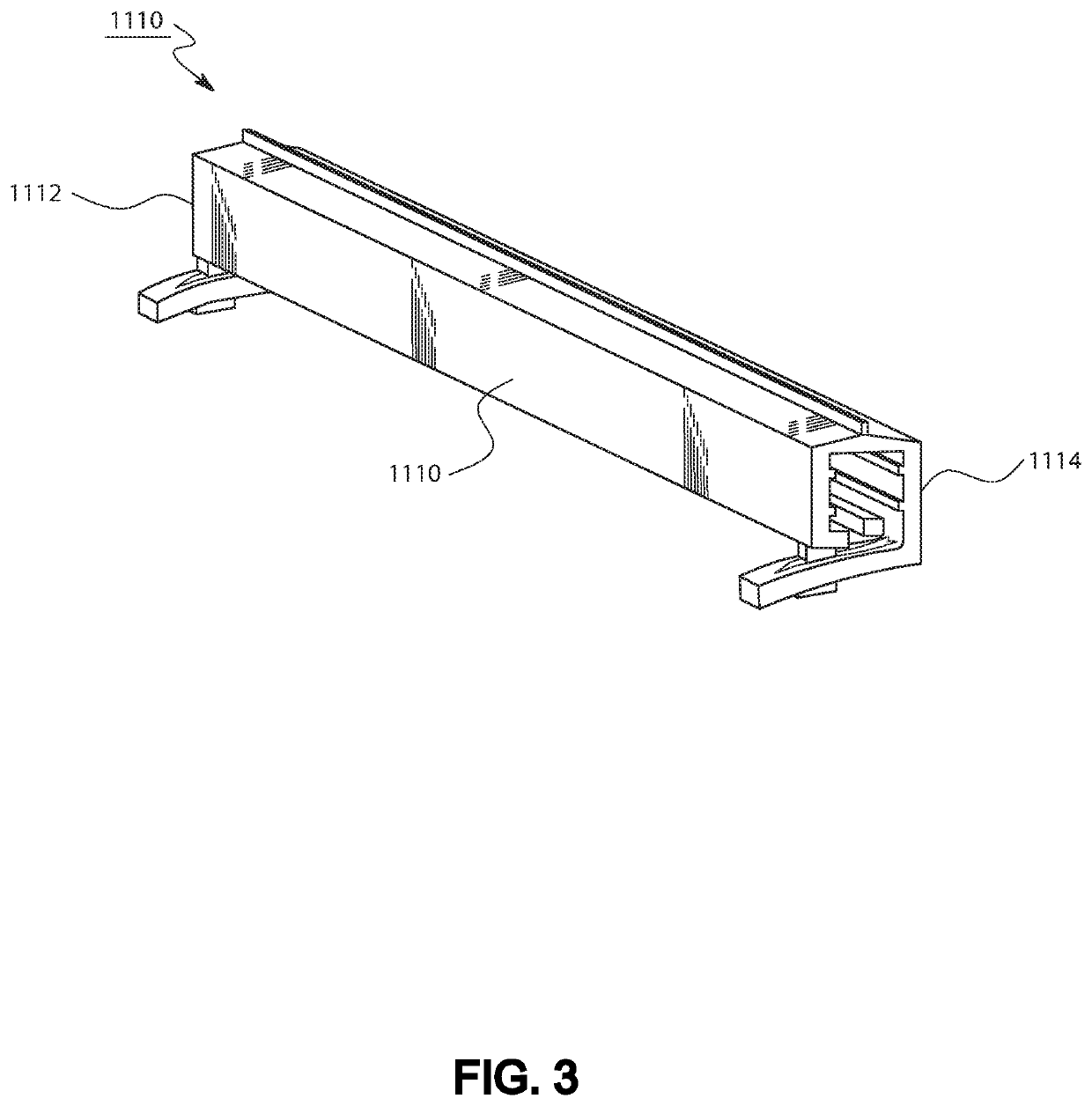Closure assembly for a bag and a method of closing the bag
a technology of closure assembly and bag, which is applied in the field of closures, can solve the problems of inconvenient and undesirable bag washing, inconvenient bag washing, and inconvenient use for most users, and achieves the effects of reducing the number of plastic bags
- Summary
- Abstract
- Description
- Claims
- Application Information
AI Technical Summary
Benefits of technology
Problems solved by technology
Method used
Image
Examples
Embodiment Construction
[0038]FIG. 1 illustrates a front perspective view of a closure assembly 1000 in accordance with an embodiment of the present invention. As shown in FIG. 1, the closure assembly 1000 has a first closure 1100 and a second closure 1200. FIG. 2 illustrates a front elevation view of the first closure 1100 and the second closure 1200, separately, in relation to a bag 1300, in accordance with an embodiment of the present invention. The length of the first closure 1100 is envisaged to exceed the length of the bag 1300. In various embodiments of the invention, the bag 1300 is made up of silicone material. It is to be noted here, that the bag 1300 is shown in dotted lines as the bag 1300 is not a part of the present invention, and has been shown only for illustrative purpose. The same is true for other figured depicting the bag 1300 in them.
[0039]FIG. 3 illustrates a top perspective view of the first closure 1100, in accordance with an embodiment of the present invention. The first closure 11...
PUM
 Login to View More
Login to View More Abstract
Description
Claims
Application Information
 Login to View More
Login to View More - R&D
- Intellectual Property
- Life Sciences
- Materials
- Tech Scout
- Unparalleled Data Quality
- Higher Quality Content
- 60% Fewer Hallucinations
Browse by: Latest US Patents, China's latest patents, Technical Efficacy Thesaurus, Application Domain, Technology Topic, Popular Technical Reports.
© 2025 PatSnap. All rights reserved.Legal|Privacy policy|Modern Slavery Act Transparency Statement|Sitemap|About US| Contact US: help@patsnap.com



